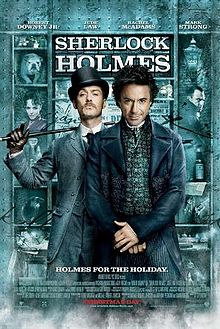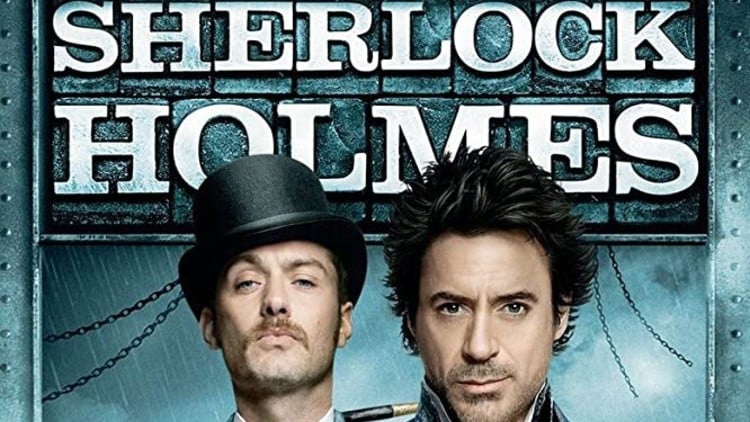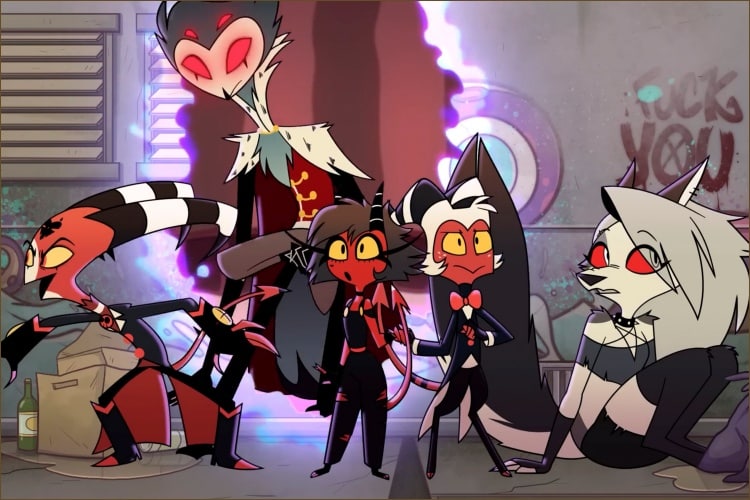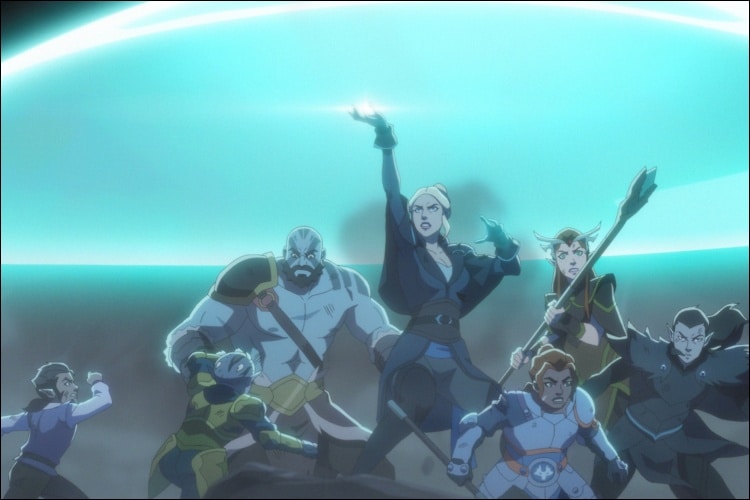Downey and Ritchie Recreate Fictional Detective
Main Cast: Robert Downey, Jr., Jude Law, Rachel McAdams
Director: Guy Ritchie
Sherlock Holmes is a stodgy intellectual in my mind’s eye – far more brains than brawn. Maybe even no brawn at all. This impression is based only on popular lore and hearsay – I’ve never read one of the actual Arthur Conan Doyle stories. With  this complete lack of foundation I decided to see Guy Ritchie’s Sherlock Holmes. Why, you ask, when I have no real feelings for the main character and have always thought him dry and boring? Robert Downey, Jr. plays the lead role. ‘Nuf said.
this complete lack of foundation I decided to see Guy Ritchie’s Sherlock Holmes. Why, you ask, when I have no real feelings for the main character and have always thought him dry and boring? Robert Downey, Jr. plays the lead role. ‘Nuf said.
I loved the Sherlock Holmes trailers, with my curiosity piqued by a little bit more than my unchaste interest in Mr. Downey. The trailers were exciting without giving too much away and made me want to spend time with the characters. Holmes mostly delivers on that promise as audiences enter the detective’s world as his loyal sidekick, Dr. Watson (Jude Law), is preparing to move from Holmes’ house and into a place of his own. Watson intends to marry a girl, you see, quitting this business of being a nanny to the erratic, genius detective. Holmes is none too pleased with this development and their changing relationship is a significant subplot in the film.
The main plot involves a powerful and wicked Lord, his crimes, capture and all-around creepy and evil agenda. Holmes is on hand to assist the police with their investigations as well as satisfy his own curiosity as the plot thickens and the bodies multiply. Throw in a pretty girl who has a history with Homes (Rachel McAdams) and a bunch of gritty, grimy, fast-paced action and you have a darned decent flick.
Downey’s Detective Steals Show
By far the two strongest elements in the film are the Downey’s performance as Holmes and the set design of 19th century London. Downey and director Ritchie give us a new kind of Holmes. The detective is not my imagination’s stodgy gent or the opium addict of more recent fables, but a nutty professor type, brilliant and scattered – needing the focus of an investigation to channel his energy and skill. Holmes is also very physical, making action scenes look and feel natural. His turn in a boxing ring shows how he prepares for his battles in less regulated environs. Downey nails this Holmes. He’s disheveled and wild-eyed one minute and calmly and eerily prescient the next. He’s a middle aged man who isn’t afraid to box bare-chested in slow motion. We’re willing to suspend our disbelief when the action and plot become a little convoluted and silly because we like Holmes.
We also like long-suffering Dr. Watson. Jude Law gives a fine performance as a man whose patience with Holmes’ shenanigans has been stretched to the limit, yet is still unable to cut ties with the adventure and camaraderie. Law is a good straight man who tempers Downey and shares in the banter that creates the pair’s buddy dynamic. McAdams contributes a smaller role effectively. Ritchie wisely chose not to have Downey and McAdams heavily involved sexually – the age difference is considerable (which could get creepy) and though they clearly have chemistry, their physical contact is quite chaste.
The second greatest player in Sherlock Holmes is a brilliant London setting. This city is dirty, busy and foul – almost black and white in its unhappy squalor. The setting combines live scenery, studio sets and CGI. I have no idea where one begins and the others end and couldn’t care less. The visual seamlessly flow together, and we can almost feel the seediness and occasional splendor.
Within this distinctly period setting Ritchie mixes very modern filmmaking, twisting the notion of period pieces with the sensibilities of the best modern action films. I would compare the filmmaking to Indiana Jones, but Ritchie displays a greater stylistic sensibility. Of particular note are the scenes in which the action halts while Holmes plans and imagines his fight moves and their outcomes in slow motion with a voice-over narration before carrying them out at full speed. Also praiseworthy are the fun multi-player action sequences that rely far more on fist and club than gun and sword.
Speak Up, Sherlock
Sherlock Holmes; poor sound mixing is a problem. This seems weird – sound mixing is the Academy Award presentation everyone uses to go to the bathroom – but it’s a problem. Action, ambient setting noise or the score often overwhelm dialogue. The result is that we miss too much of what is likely witty banter between Holmes and Watson. The English accents make it much, much worse for American ears. This isn’t my experience. Others at different theater report the same sound problems. Sherlock Holmes is a movie that deserves the benefits of a big screen, but I think I’ll enjoy it even more on DVD with Closed Captioning.
Rewind Recommends
Sherlock Holmes is a fun reworking of the iconic detective. Robert Downey, Jr. nails the role of Holmes and creates a nice rapport with co-stars Law and McAdams. The visuals of London are glorious and the modern, stylish camera work plays off the period genre effectively.
The biggest issue I have with the movie is a broad sound-mixing problem that obscures some of the dialogue, making the English accents difficult to understand. I still recommend the film, but pay close attention to the dialogue. Or you might want to simply ogle the delish Mr. Downey on the big screen for a couple of hours. Perfectly acceptable option, in my opinion. Elementary even. 4 1/2 stars out of 5.

Sue reads a lot, writes a lot, edits a lot, and loves a good craft. She was deemed “too picky” to proofread her children’s school papers and wears this as a badge of honor. She is also proud of her aggressively average knitting skills. TV and indie movies are her jam.





Leave a Reply